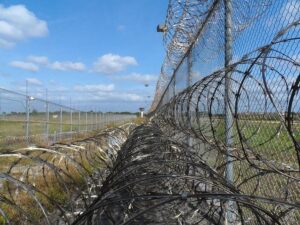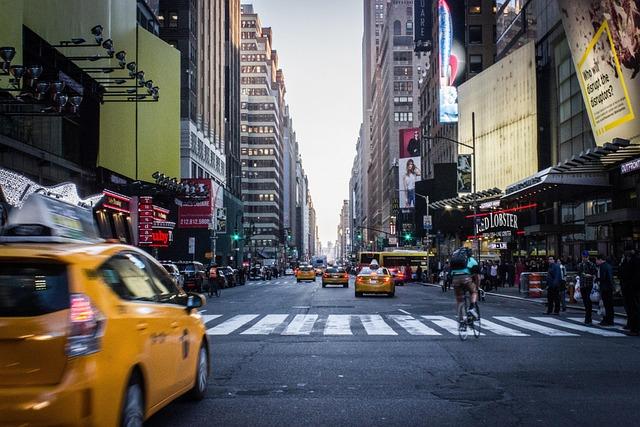New York City’s Election: A Defining Moment for the City’s Future
Understanding the Far-Reaching Consequences of Today’s NYC Mayoral Election
As New Yorkers cast their ballots today, the significance of this election transcends the mere selection of a mayor. This vote represents a crucial crossroads that will determine the trajectory of the largest city in the United States, influencing vital areas such as public safety, housing affordability, economic revitalization, and social justice. The decisions made will resonate deeply, affecting millions of residents and shaping municipal policies for the foreseeable future.
The candidates offer contrasting approaches that could steer New York City toward markedly different futures, especially in terms of economic recovery and social inclusion. The election is not just about leadership but about endorsing a vision for the city’s development and resilience.
Core Issues Defining the Election
- Affordable Housing Solutions: Tackling the escalating homelessness crisis and soaring rental costs
- Public Safety Reforms: Finding equilibrium between effective policing and community trust-building
- Transportation Enhancements: Improving public transit accessibility and environmental sustainability
- Climate Resilience: Advancing green initiatives and disaster preparedness at the local level
| Policy Domain | Anticipated Outcomes | Primary Voter Concerns |
|---|---|---|
| Housing | Expansion of affordable housing stock | Increasing rents, shelter overcrowding |
| Public Safety | Implementation of community-focused policing | Crime rates, police transparency |
| Transportation | Upgrades to subway and bus networks | Commute efficiency, accessibility |
| Environment | Strengthened climate adaptation measures | Flood risks, pollution levels |
Examining the Key Challenges Influencing Voter Decisions Beyond the Mayoral Contest
Voters are weighing more than just candidate profiles; they are deeply concerned with the pressing issues that define daily life in New York City. The affordability crisis in housing, concerns over public safety, and the quality of public education remain at the forefront of public discourse. These challenges are compounded by the city’s ongoing recovery from the COVID-19 pandemic and entrenched socio-economic disparities.
For example, the median rent in NYC has surged by over 15% in the past two years, intensifying the demand for policies that deliver real, measurable relief rather than empty promises. Similarly, public transportation and environmental sustainability continue to shape voter priorities as the city seeks to modernize infrastructure and combat climate change.
| Issue | Voter Priority Level | Anticipated Candidate Initiatives |
|---|---|---|
| Housing Affordability | Very High | Expand rent stabilization, increase affordable housing development |
| Public Safety | Very High | Enhance police-community partnerships, increase patrols |
| Public Education | Moderate | Boost funding, improve educational programs |
| Transportation | Moderate | Modernize transit systems, expand cycling infrastructure |
| Climate Change | Low to Moderate | Invest in renewable energy, strengthen resilience planning |
- Economic revitalization plans are under scrutiny, focusing on job creation and support for small businesses affected by the pandemic.
- Healthcare accessibility, including mental health services, remains a critical concern, especially in underserved neighborhoods.
How Community Involvement Shapes New York City’s Political Landscape
Active participation from local communities is fundamental not only in determining election outcomes but also in influencing the policy agenda in New York City. When residents engage through neighborhood councils, advocacy groups, or online forums, they amplify diverse perspectives and hold elected officials accountable. This grassroots involvement disrupts traditional power dynamics and ensures that policies reflect the complex needs of the city’s multifaceted population.
Recent studies on civic engagement reveal a strong correlation between community activism and policy changes:
| Engagement Method | Policy Influence | Illustrative Example |
|---|---|---|
| Local Community Meetings | Adjustments in zoning laws | Rezoning initiatives in Brooklyn neighborhoods |
| Advocacy Movements | Legislation on tenant rights | Strengthened rent control measures |
| Virtual Town Halls | Greater government transparency | Live budget monitoring tools |
Empowered communities exert pressure on policymakers to prioritize urgent issues such as affordable housing, education reform, and environmental justice. Given the uneven voter turnout across boroughs, fostering ongoing dialogue and grassroots mobilization is essential to ensure that the city’s political future mirrors the aspirations of all its residents, not just a select few.
Recommendations for Maintaining Civic Engagement Beyond Election Day
To sustain momentum after the polls close, it is vital to cultivate continuous civic participation by establishing accessible communication channels between citizens and their representatives. Municipal bodies and neighborhood organizations can organize regular forums to address local concerns, enabling residents to express their views and track government responsiveness in real time. Additionally, harnessing digital tools-such as mobile apps and social media-can keep communities informed and engaged, promoting inclusive and well-informed participation across diverse demographics.
Fostering a culture of ongoing civic involvement also requires empowering grassroots leaders through training and resources. Providing workshops on strategic advocacy and data analysis equips local activists to campaign more effectively, while collaborations with educational institutions integrate civic literacy into everyday learning. The following table outlines key strategies and their anticipated benefits to guide stakeholders in nurturing long-term community stewardship:
| Strategy | Implementation | Projected Outcome |
|---|---|---|
| Community Forums | Monthly public gatherings | Improved dialogue and trust between residents and officials |
| Digital Engagement Tools | Interactive apps and social media platforms | Expanded reach and sustained participation |
| Leadership Development | Training sessions for grassroots organizers | Enhanced advocacy skills and accountability |
| Civic Education Partnerships | Programs in schools and libraries | Informed, active future electorate |
Final Thoughts: The Lasting Significance of Today’s Vote
As New Yorkers make their voices heard at the ballot box, the implications of their choice will extend well beyond the immediate selection of a mayor. This election represents a defining moment that will influence the city’s approach to equity, safety, and economic opportunity for years ahead. It calls on voters to reflect on the broader consequences of their decision and to engage thoughtfully in a democratic process that will shape the identity and direction of New York City. The stakes are unprecedented, and the results will embody the collective vision of the city’s diverse communities.













